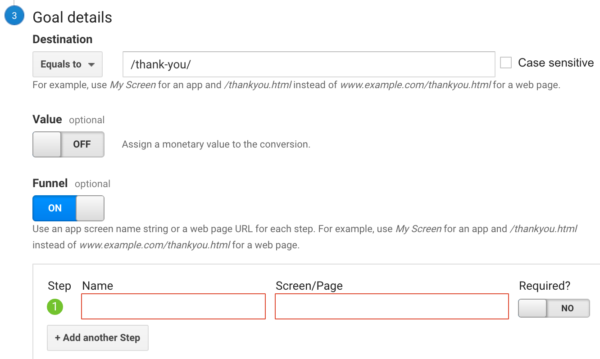Key Insights on What Data Is Google Analytics Goals Unable to Track
Introducing the Blind Attractions: Understanding What Google Analytics Goals Can not Determine
In the world of electronic analytics, Google Analytics stands as an effective device for monitoring and assessing online user interactions. Amid its robust capabilities, there exist blind spots that usually evade measurement. what data is google analytics goals unable to track. Understanding what Google Analytics objectives can not gauge is crucial for obtaining a comprehensive view of customer actions and involvement. As we explore the details of these dead spots, we discover a complicated web of uncharted territories that hold useful insights into user activities and inspirations, difficult traditional knowledge and clarifying the constraints of our data-driven understanding.
Customer Habits on External Platforms
Comprehending how customers engage on external systems is essential for maximizing on the internet approaches. Exterior platforms, such as social media networks, recommendation sites, and online discussion forums, play a significant duty in driving traffic to a firm's website. By assessing individual actions on these platforms, services can gain useful understandings into the efficiency of their advertising and marketing efforts and the preferences of their target market.
One trick element of customer behavior on external platforms is the reference source. By tracking where the individuals are originating from, businesses can determine which systems are driving one of the most traffic to their website. This info can aid companies assign their sources better, concentrating on the platforms that produce the very best outcomes.

Offline Communications and conversions
Evaluating customer habits on external systems gives important insights into online methods; however, taking into consideration offline conversions and communications is similarly necessary for an extensive understanding of a firm's general efficiency. Offline conversions, such as in-store purchases or phone inquiries, play a considerable role in lots of businesses' success.

Acknowledgment Beyond Last Click
When delving right into the realm of digital advertising and marketing analytics, it becomes vital to look past the single touchpoint of the last click for a more detailed understanding of acknowledgment. While Google Analytics provides valuable understandings into user habits, depending exclusively on last-click acknowledgment can be restricting - what data is google analytics goals unable to track. Acknowledgment models that surpass the last click use an extra nuanced sight of the consumer trip, taking into consideration all the touchpoints that lead to a conversion
Attribution past the last click enables marketers to assign credit score to numerous communications along the conversion path, giving a clearer index photo of the performance of different advertising networks. By exploring multi-touch acknowledgment versions such as direct, time decay, or position-based attribution, businesses can much better allot their advertising budgets and optimize their approaches for maximum impact.
Understanding the influence of each touchpoint in the conversion procedure is vital for making notified choices and making best use of ROI. By accepting attribution beyond the last click, companies can gain deeper understandings into consumer behavior and customize their marketing initiatives a lot more efficiently.
Cross-Device and Cross-Browser Monitoring

Similarly, cross-browser monitoring matches cross-device tracking by catching user actions as they switch between various internet internet browsers. Understanding how individuals engage with internet sites on various web browsers can assist marketers optimize their online experiences to guarantee consistency and functionality across various platforms.
Qualitative Information and User Intent
Understanding user intent through qualitative data analysis is essential for establishing targeted digital advertising and marketing approaches that reverberate with the demands and choices of the target audience. Qualitative data provides insights into the 'why' behind customer activities, clarifying inspirations, emotions, and preferences that quantitative data alone can not record. By assessing customer comments, comments, and interactions, online marketers can uncover important info about user intent, permitting them to customize their messaging, material, and offerings to better straighten with what their target market is looking for.
Qualitative data also aids in comprehending the context in which individuals engage with an internet site or application. This contextual understanding allows online marketers to produce more personalized and pertinent experiences, inevitably driving greater interaction and conversion rates. By diving right into individual intent with qualitative data analysis, services can get a deeper understanding of their target audience, causing much more reliable advertising methods that satisfy customers' expectations and demands.
Final Thought
Finally, Google Analytics goals have limitations in gauging user habits on external platforms, offline conversions, acknowledgment beyond last click, cross-browser and cross-device tracking, and qualitative information associated to individual intent. what data is google analytics goals unable to Discover More track. It is very important for organizations to be knowledgeable about these blind places in order to supplement their data analysis with various other tools and approaches to acquire a much more comprehensive understanding of their audience and boost their total digital advertising approaches
By evaluating individual actions on these platforms, services can obtain important understandings right into the performance of their marketing efforts and the preferences of their target audience.
Examining user behavior on outside systems provides valuable insights into on the internet methods; nonetheless, considering offline conversions and interactions is similarly vital for a thorough understanding of a business's general efficiency.In electronic advertising and marketing analytics, moving beyond last-click attribution to check out cross-device and cross-browser tracking is necessary for getting an all natural understanding of customer communications across various platforms and tools. By assessing customer responses, remarks, and communications, marketers can reveal valuable details concerning individual intent, enabling them to tailor their messaging, content, and offerings to much better straighten with what browse around this web-site their target market is seeking.
By delving right into individual intent with qualitative data evaluation, companies can gain a much deeper understanding of their target audience, leading to more effective marketing strategies that fulfill customers' assumptions and needs.